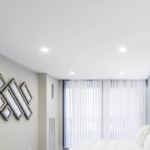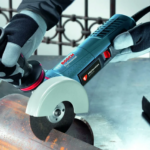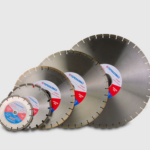In recent years, the assortment of lamps and an electric lamps offered to customers has significantly expanded. A variety of lighting products puts inexperienced buyers in a difficult position. For example, electric lamps are sold in colorful packaging with labeling: “luxury”, “ultra”, “maxi”, “euro”, “novelty” and so on. Choose among them the most effective, reliable, safe and, most importantly, suitable for use in a particular place, we will try to help you.
Incandescent lamps (ln). The most common and cheapest. The source of light in them is a hot tungsten spiral. The efficiency of such a source is low, with increased voltage in the network, the lamp service life is sharply reduced: the spiral burns out, most often at the time of inclusion, when it is not yet heated and its resistance is less than that of the heated; At this time, a current flows through the lamp 2 times more normal. Sometimes, when burning from a voltage jump, a hot spiral falls on the glass of the lamp and its flask explodes, scattering glass fragments in all directions.
Some manufacturers increase the efficiency of the lamps by adding crypton gas (“crypton” lamps to the flask) or metal spraying on a part of the inner surface of the flask (mirror lamps), while their light output increases by 15-20%. Conventional lamps are produced with a capacity of 15-200 watts, mirror – up to 60 watts. For mirror lamps, special plafones are released, which are built into the suspended ceilings. The average service life of LN is 1000 hours of work or 1 year by glow 3 hours a day.
LN finds wide .^application, since in comparison with other light sources, in addition to the low price, have undeniable advantages:
– Enforced inclusions tolerate well well;
– They are not afraid of low temperatures and are widely used for outdoor lighting for any frosts;
– It is easy to install the necessary illumination with them, using simple voltage regulators;
– do not require qualification services, as they are easily replaced;
– Sunday.
LN serve as a standard with which all other light sources are compared.
Luminescent lamps (ll), or daylight lamps, are made in the form of a straight or, u figurative tube of ordinary glass. They are attributed to the group of gas discharge. “The tubes are filled with a mixture of the inert gas of the Argon and mercury vapors. The inner surface of the tube is covered with phosphor – a special composition that shines under the influence of ultraviolet radiation of an electric discharge in mercury pairs. Argon stabilizes the glow. At the ends of the tube there are electrodes – spirals from tungsten wire. LL is produced with a capacity of 15 to 80 watts and widely used to illuminate production and residential premises. Their main advantages (over LN – a higher efficiency, that is, more light output with the same power and a long service life – up to 10 thousand hours. Relatively inexpensive.
But LL also has a lot of disadvantages:
– frequent inclusions reduce their service life;
– light pulsates with the frequency of the power grid, which negatively affects vision;
– Inoperative at low air temperatures, at 10 degrees they may not light up;
– require stable voltage, with a reduced voltage, they also do not light up;
– They have a more complex connection diagram to the power supply, starting equipment (PRA) – throttle and starter is required;
– do not allow adjusting the illumination of voltage regulators;
– Some types of chokes create noise during operation; ‘ –
– contain poisonous vapors of mercury, albeit in a small amount.
The failed lamp must be disposed of in special reception points, but whoever these points either saw? Nobody stores burnt lamps at home, they are simply thrown into a common garbage collection, where they most often break, enduring the health of workers who remove household waste.
New modern LLs are equipped with electronic PROs (EPRO), which save them from some disadvantages and convert a current of an industrial frequency of 50 Hz into a frequency of 30-60 kHz, so LL does not flicker (their light does not pulse), they are turned on more reliably and at a lower temperature (depending on the model up to minus 20-30 degrees) and work silently.
Power of LL connected to EPRO – from 6 to 58 W. But they cost an eople 4-5 times more expensive than PRU and 2 times more expensive than the lamps themselves.





